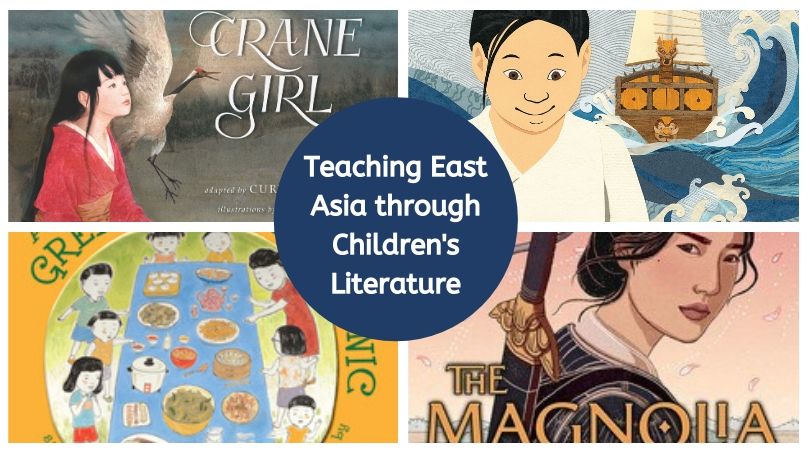In this guest post, Natasha Thomas, senior at Princeton University, discusses the importance of studying East Asia past and present. Thomas proposes creating a diverse collection that shows the multiple ethnic groups and tensions that contributed to the development of such influential cultures and helps American students understand this region with a rich, complicated history rather than the monolith it’s often portrayed as.
As the child of a U.S. diplomat, I had the opportunity to grow up in China surrounded by two cultures and two languages. I came to know China as a country with diverse landscapes from giant metropolises, to small farming villages, from frigid plains up north, to humid mountains and forests down south.
Beijing was a huge city, with sky-scrapers and highways going up daily. This also meant that small neighborhoods like the one behind my International School were being razed to the ground to be replaced by towering apartment complexes and giant malls. It was an exciting place to be, a place constantly in flux, and a reality and a home for so many, including myself.
It would come as a shock to me when I was back in the U.S. for one year in fifth grade and a friend of a friend asked if I ate anything but rice while I was in China, and what it was like to live without electricity.
I was angry at her ignorance at the time, but later came to realize that this was not an uncommon view for people in the U.S. to have of China. In schools, if China was ever mentioned, the image provided was an ancient one, where, yes, there was no electricity.
But that is far from the reality today. Even in the most remote villages, it’s not uncommon to get great cellphone reception. What I had witnessed in my peer that day, was simply a gap in her education.
For a region that is so frequently in the national news, it is strange how East Asian books and topics are so scarcely taught in the U.S. school system. Chinese (including Mandarin and Cantonese) alone is the third most spoken language in America. Considering the large Asian American populations in the U.S., as well as the global importance of China, Taiwan, Korea and Japan, this part of the world is both highly relevant and accessible with the right resources.
Here are some of my recommendations for books with an East Asia focus that would fit perfectly into pre-existing school curricula.
 Folktales and Historical Fiction: These books would fit right in with any unit on fairytales or fables. Talk about the conventions of these genres and make cross-cultural comparisons.
Folktales and Historical Fiction: These books would fit right in with any unit on fairytales or fables. Talk about the conventions of these genres and make cross-cultural comparisons.
The Magical Monkey King: Mischief in Heaven – an accessible and swashbuckling epic about the most famous and mischievous protagonist in China
The Turtle Ship – a Korean legend about a boy and his pet turtle
The Crane Girl – an enticing Japanese fairytale on par with any Hans Christian Andersen tale
The Magnolia Sword: A Ballad of Mulan – Thrilling reinterpretation of Mulan told by Sherry Thomas, born and raised in China
The Dragon Lover: and Other Chinese Proverbs – a group of short fables with lessons attached. As an added bonus, these Chinese sayings are all usable today!
Modern Immigrant Stories: Use these books to supplement your unit on immigration, identity, or community.
Auntie Yang’s Great Soybean Picnic – one Chinese family’s experience of bringing a little bit of home with them to the US by creating a new tradition
Goldfish and Chrysanthemums – how one determined girl cheers up her grandmother who has just learned that her childhood home in China is being demolished
Tashi and the Tibetan Flower Cure – a story about coping with a grandparent’s illness and connecting back to one’s roots
Mama and Papa Have a Store – the author shares memories of her childhood growing up in Guatemala with her parents who emigrating from China
Cooper’s Lesson – a Korean American boy must overcome the embarrassment he feels for not being able to speak Korean through an unlikely friendship with a Korean store clerk
Guiding Questions:
- What family traditions do you have? Are there any special holidays you celebrate? Foods you cook? Places you go with your family?
- What differences exist between you and your grandparents? Do you know about how they grew up? What can we learn from grandparents and what can grandparents learn from us?
- What language(s) can you speak? Why do we learn different languages in school? Have you ever felt embarrassed about speaking a language?
Practical engagement stories: Engage with the stories and cultures in these books through class activities whether that’s cooking, arts and crafts, or exercise!
Hiromi’s Hands – the origin story of a renowned female sushi chef
The Have a Good Day Cafe – a family’s attempt to make their food cart stand out by incorporating Korean cooking
Origami
Butterflies for Kiri – through trial and error, a young girl works long and hard to learn how to fold an origami butterfly
Taichi
A Morning With Grandpa – an energetic girl teaches her grandpa yoga while he teaches her taichi
Books set in East Asia: Immerse students in new cultures with these books that bring us on journeys outside of America.
The Falling Flowers – a story about creating memories and passing down traditions
Tofu Quilt – a collection of free verse autobiographical poems about a girl growing up in 1960’s Hong Kong who dreams of becoming a writer despite the gender roles forced upon her
Shanghai Messenger – a collection of poems telling one girl’s story of homesickness, family, and adapting when she spends a summer with relatives in Shanghai
Engagement Activities:
- Ask students to talk about an important time in their life through a collection of poems modeled after Tofu Quilt and/or Shanghai Messenger.
- Have students plan a trip to a location in East Asia, assigning them different cities. Have them include what attractions they might want to visit, what foods they would want to try, what things might be hard to adjust to, and what things they would be excited about experiencing.
Additional Resources: Explore beyond the Lee & Low collection and become engaged with East Asian topics, including:
For Educators:
- Teaching Japan Through Children’s Literature
- University of Colorado Program for Teaching East Asia
- Asia Society Educator Resources
- East Asia Gateway for Linking Educators
- The National Consortium for Teaching About Asia
For Students:
- Boston Children’s Museum Interactive App
- World Travel Guide Facts for Kids
- MIT Visualizing Cultures
- Google Arts & Culture which features museum exhibitions such as from CAFA ART Museum in China and National Palace Museum, Taiwan via Google Arts and Culture
 Natasha Thomas is a senior at Princeton University majoring in Comparative Literature (with an emphasis on Chinese literature). Her family is from the U.S., but she grew up in Taiwan, Beijing, and Belgium. Her extracurricular activities include serving as a college application advisor for high-achieving low-income high school students and performing with the K-Pop dance group on campus. You can find her any day of the week slurping up a good bowl of noodles, laboring over learning a new language, or watching comedy shows with her friends.
Natasha Thomas is a senior at Princeton University majoring in Comparative Literature (with an emphasis on Chinese literature). Her family is from the U.S., but she grew up in Taiwan, Beijing, and Belgium. Her extracurricular activities include serving as a college application advisor for high-achieving low-income high school students and performing with the K-Pop dance group on campus. You can find her any day of the week slurping up a good bowl of noodles, laboring over learning a new language, or watching comedy shows with her friends.










